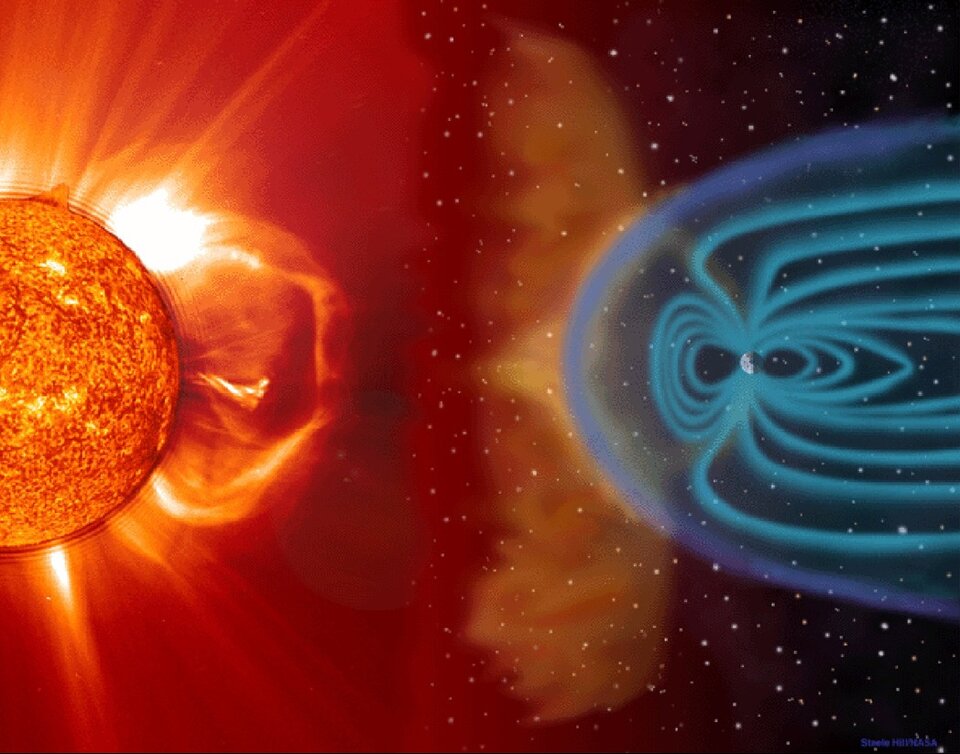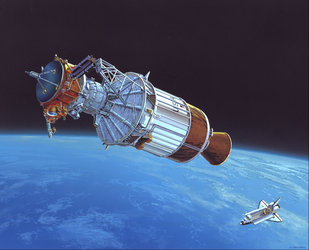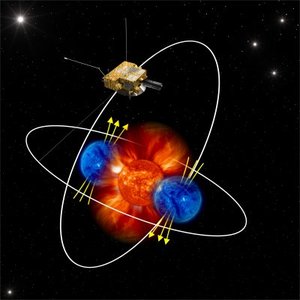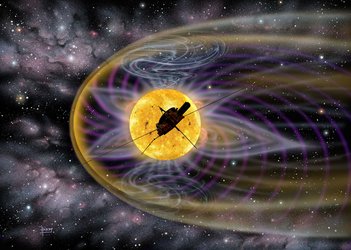Moving to the rhythm of the Sun
Scientists from the Ulysses mission have proven that sounds generated deep inside the Sun cause the Earth to shake and vibrate in sympathy. They have found that Earth’s magnetic field, atmosphere and terrestrial systems, all take part in this cosmic sing-along.
David Thomson and Louis Lanzerotti, team members of the HISCALE experiment, on board Ulysses, together with colleagues Frank Vernon, Marc Lessard and Lindsay Smith, present evidence that proves that Earth moves to the rhythm of the Sun. They show that distinct, isolated tones, predicted to be generated by pressure and gravity waves in the Sun, are present in a wide variety of terrestrial systems.
Using highly sophisticated statistical techniques, Thomson and colleagues have discovered these same, distinct tones emitted by the Sun, in seismic data here on Earth. They have also found that Earth’s magnetic field and atmosphere, and even voltages induced on ocean cables, are all taking part in this cosmic sing-along.
Although these tones are all around us, it would not be possible for us to hear them, even if we listened very closely. Their pitch is too low for the human ear, typically 100-5000 microHertz (1 microHertz corresponds to 1 vibration every 278 hours). This is more than 12 octaves below the lowest note audible to humans. For comparison, the note to which orchestras tune their instruments (A above Middle C on a piano) corresponds to 440 Hertz.

According to Thomson, data from Ulysses provided an important clue as to how these sounds generated deep inside the Sun reach the Earth.
The same techniques applied to the terrestrial data sets were first used on measurements of energetic particle fluxes and interplanetary magnetic fields recorded on board Ulysses.
Surprisingly, rather than being random in nature, the fluctuations in the data were made up of many discrete frequencies or tones, similar to the terrestrial data. These tones also corresponded well to those that theorists predict, should be generated by pressure and gravity waves in the Sun.
Some of these so-called solar oscillations had been observed optically using instruments on SOHO, and by dedicated networks of telescopes on the Earth. They are caused by pressure waves in the Sun, and are referred to as p-modes. The deeper sounds associated with the Sun’s gravity waves (g-modes) are far more elusive.
Just as seismologists on Earth use sound waves to probe the interior of our world, solar scientists would like to use g-modes to probe the core of the Sun, if only they could detect them. G-modes have been undetectable optically, so Thomson and colleagues’ evidence for them in interplanetary data was both unexpected and hard to explain at first.

They examined a wide range of data sets covering natural phenomena and technological systems in fields as diverse as telecommunications and seismology and continued to find new evidence of discrete tones with characteristics of solar oscillations in what was previously considered background “noise”. This added to the puzzle posed by the Ulysses findings.
Thomson believes that the key to the problem is magnetism. He suggests that the g-mode vibrations are picked up by the magnetic field at the Sun’s surface. Part of this magnetic field is then carried away from Sun into interplanetary space by solar wind, where it can be detected by space probes like Ulysses.
The magnetic field of the solar wind in turn interacts with the Earth’s magnetic field and causes it to vibrate in sympathy, retaining the characteristic g-mode signals. The motions of the geomagnetic field then couple into the solid Earth to produce small, but easily detectable, responses as Earth, with many of its technological systems, moves to the rhythm of the Sun.
Notes for editors:
Ulysses is a joint mission between ESA and NASA.
ESA manages the mission operations and provided the spacecraft, built by Dornier Systems, Germany (now Astrium). NASA provided the Space Shuttle Discovery for launch and the inertial upper stage and payload-assist module to put Ulysses in its correct orbit. NASA also provided the radioisotope thermoelectric generator which powers the spacecraft and payload.
ESA’s ESTEC and ESOC are now managing the mission with NASA’s Jet Propulsion Laboratory (JPL). Ulysses is tracked by NASA’s Deep Space Network. A joint ESA/NASA team at JPL is overseeing spacecraft operations and data management. Teams from universities and research institutes in Europe and the United States provided the nine science instruments.
For more information:
Richard Marsden, ESA Ulysses Project Scientist
Email: richard.marsden @ esa.int















 Germany
Germany
 Austria
Austria
 Belgium
Belgium
 Denmark
Denmark
 Spain
Spain
 Estonia
Estonia
 Finland
Finland
 France
France
 Greece
Greece
 Hungary
Hungary
 Ireland
Ireland
 Italy
Italy
 Luxembourg
Luxembourg
 Norway
Norway
 The Netherlands
The Netherlands
 Poland
Poland
 Portugal
Portugal
 Czechia
Czechia
 Romania
Romania
 United Kingdom
United Kingdom
 Slovenia
Slovenia
 Sweden
Sweden
 Switzerland
Switzerland

































